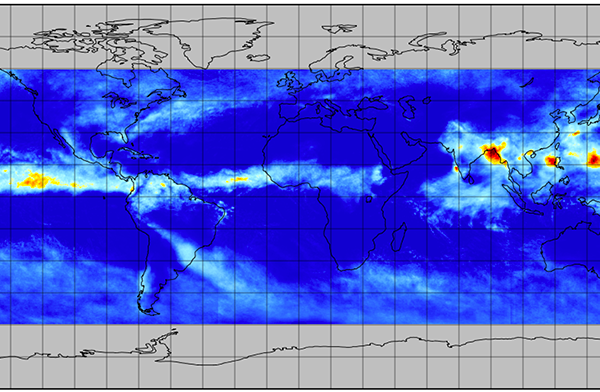Experimental NCEI/Climate Data Records obs4MIPs Datasets
The Observations for Model Inter-Comparison Project (obs4MIPs) is an effort to make observational data available to the climate modeling community in the same format that they use to share climate model outputs. In support of this program, three Climate Data Records (CDRs) from the NCEI Climate Data Record Program have been repackaged according to the obs4MIPs specifications. The repackaged CDRs are: the Optimal Interpolation Sea Surface Temperature (OISST) CDR, the High Resolution Infrared Radiation Sounder (HIRS) Outgoing Longwave Radiation (OLR) CDR, and the Passive Microwave Sea Ice Area Fraction CDR.
Optimal Interpolation Sea Surface Temperature (OISST)

HIRS Outgoing Longwave Radiation (OLR)

Northern Hemisphere Passive Microwave Sea Ice Area Fraction

Southern Hemisphere Passive Microwave Sea Ice Area Fraction

Extended Reconstructed Sea Surface Temperature (ERSST)

Fraction of Absorbed Photosynthetically Active Radiation (FAPAR)

GridSat

Leaf Area Index (LAI)

Normalized Difference Vegetation Index (NDVI)

PERSIANN

SeaWinds

Tools for Viewing Data
Here’s a partial list of tools that can be used to inspect the netCDF files found on the obs4MIPs page.
- Panoply — Panoply is a cross-platform application that plots geo-gridded and other arrays from netCDF, HDF, GRIB, and other datasets.
- IDV — Integrated Data Viewer (IDV) from Unidata is a Java-based software framework for analyzing and visualizing geoscience data.
- NCL — NCL is an interpreted language designed specifically for scientific data analysis and visualization.
- ncBrowse — A Java application that provides flexible, interactive graphical displays of data and attributes from a wide range of netCDF data file conventions.
- Ncview — Scripps Institution of Oceanography’s visual browser for netCDF format files.
- Ferret — NOAA/PMEL program that runs on Unix and Microsoft Windows using an X windows display.
- Weather and Climate Toolkit — NOAA’s Weather and Climate Toolkit.
DISCLAIMER: Please note these pages present experimental analyses developed by researchers at CICS-NC and/or of interest to the CICS-NC community and their collaborators. These analyses are subject to change as our understanding of the Earth’s climate system improves and/or our interests change. There is no guarantee on their future availability.
